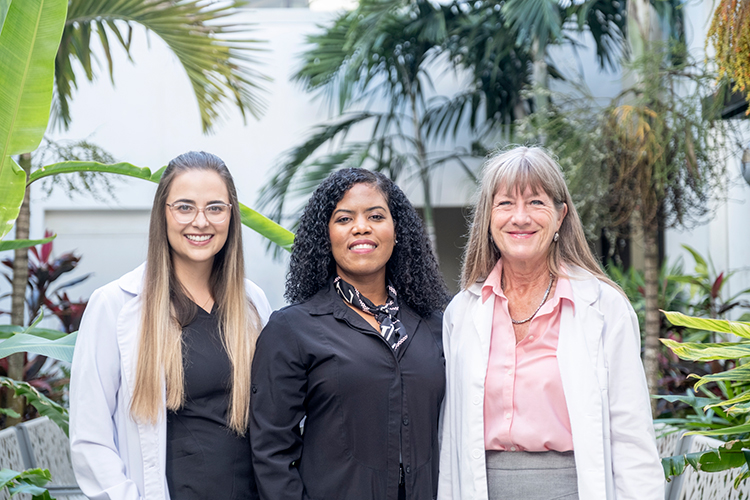Antibiotic resistance isn’t a new problem, but it is one that continues to grow. “More than 2.8 million antimicrobial-resistant infections occur in the U.S. each year, and more than 35,000 people die as a result,” according to the Centers for Disease Control and Prevention.
The situation is serious, but a trio of experts from Sebastian River Medical Center says there are things we can do to help stay healthy and not contribute to making the problem worse.
Susana Vigue, pharmacy supervisor, advises patients to be precise and accurate when discussing their drug allergies with a doctor. “For instance, many people share that they have a penicillin allergy. My question is, when was the last time they experienced it? Many people can have an allergic reaction as a child and outgrow it. What did the reaction look like? Were you on other meds at the time?”
Vigue says that if they have accurate information, doctors can prescribe the correct antibiotic in minimum amounts for your health issue. This reduces the overall use of antibiotics and helps alleviate the need for multiple prescriptions, which can tend to breed drug-resistant bacteria.
Lori Jagniecki, infection control practitioner at SRMC, would like to see people change the way they perceive antibiotics. “Yes, they can work wonders, but they aren’t always called for. Patient demand for antibiotics is deeply ingrained and if they don’t receive a prescription, they may feel that the doctor hasn’t done anything for them. Patient satisfaction is important for medical teams and they can feel pressured to live up to expectations.”
Dr. Aisha Thomas, infectious disease specialist, advises people to use common sense and avoid situations that may require they be treated long-term with antibiotics, which have a range of potential harmful side effects.
For example, if you’re allergic to cats, you may want to consider a different pet – one that doesn’t necessitate ongoing use of medications. Though antibiotics are not helpful with allergies and most sinus problems, millions of people take antibiotics for those conditions, increasing the chance that incidental bacteria will become resistant to the drugs.
Another example: “Don’t expose yourselves to dangerous situations – [such as unprotected sex that can lead to] contacting gonorrhea, if you know that treatment is compromised,” Dr. Thomas adds.
The Center for Disease Control reports that gonorrhea, along with tuberculosis and MRSA, have steadily developed resistance to the antibiotic drugs prescribed to treat them.
Vigue says, “In 2008, doctors paid little attention to MRSA because they saw it so infrequently. Now it’s almost a given that any patient in the hospital has it.”
Bacteria evolve and become resistant when they are exposed to an antibiotic but not destroyed by it. The more that antibiotics are used ineffectively by people, the more resistant bacteria emerge.
Overuse in animals is another major cause of the problem.
A 2022 report issued by the National Institutes of Health states, “The overuse of antibiotics in food animals has led to widespread development of bacterial resistance … that is a serious threat to public health globally.”
No new classes of antibiotics have been discovered since the 1980s, according to the Pew Charitable Trust. A class defines a group of antibiotics that have a certain way of working – for example, by killing bacteria or by stopping them multiplying – and are effective against certain types of infections.
The antibiotics that have been brought to market in the past three decades are variations of existing drugs and bacteria keep figuring out how to survive them.
Discovering and developing genuinely new antibiotics is challenging. The science is tricky and the research and development process is time-consuming and expensive, and often fails. It can take 10-15 years and over $1 billion to develop a new antibiotic.
Vigue says the medical community is well aware of the need to monitor antibiotic use.
Toward that end, Sebastian River Medical Center is accredited by the Joint Commission as a hospital that meets standards for limiting unneeded use of antibiotics.
As of Jan. 1, 2023, new and revised antibiotic stewardship requirements were made available to Joint Commission–accredited hospitals and critical access hospitals, expanding upon current expectations for antibiotic stewardship programs in
hospital settings.
Lori Jagniecki, RN, MPA, CIC, infection control practitioner at Sebastian River Medical Center, is a graduate of Marymount University Nursing School in Arlington, Va., and has a master’s in healthcare administration from Western Michigan University. She is board certified in infection prevention and control. Susana Vigue, PharmD, pharmacy supervisor at Sebastian River Medical Center, has a Doctor of Pharmacy degree from St. Louis College of Pharmacy. She is co-chair of Antimicrobial Stewardship at SRMC. Dr. Aisha Thomas, internal medicine and infectious disease specialist at Sebastian River Medical Center, received her medical degree from Spartan Health Sciences University, completed her residency at Wayne State University, and her fellowship at Medical University of South Carolina College of Medicine.

